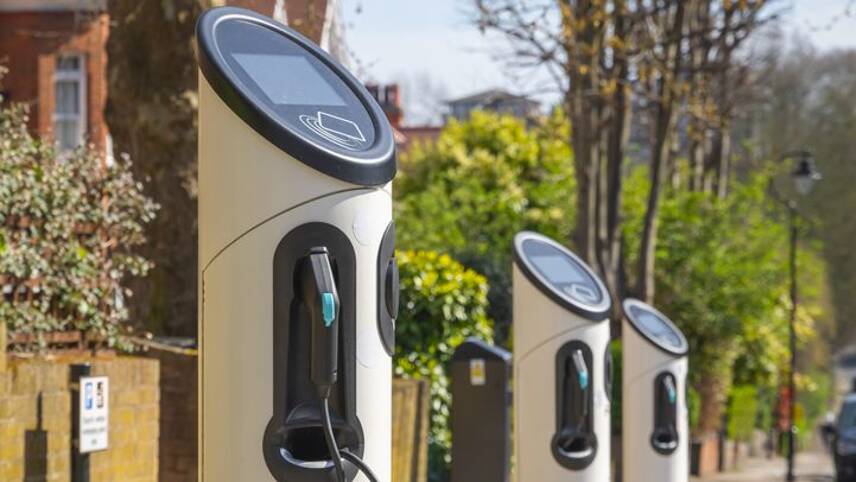Register for free and continue reading
Join our growing army of changemakers and get unlimited access to our premium content

In 2030 public charging demand will reach 10,876-gigawatt hours (GWh)
The report emphasises the importance of breaking down regulatory barriers hindering chargepoint deployment to meet the increasing energy demand on the grid by 2030.
Currently, there are more than 40,000 public EV chargepoints in the UK, serving approximately 2% of vehicles on the road. However, with EVs making up 17% of new car sales in May 2023 and projected to rise up to 80% by 2030, the number of EVs on the road is expected to reach 11 million, compared to the current 760,000.
The ZEV mandate aims to establish annual sales targets for EVs from 2024 to 2035. The targets start at 22% in 2024 and progressively rise to 80% in 2030 and 100% in 2035 for cars.
For vans, the targets begin at 10% in 2024, increase to 70% in 2030, and reach 100% in 2035.
The report recommends three ways to enhance local energy security for powering public charging including the optimisation of onsite renewable generation for local EV charging stations and third-party fleets, reducing grid reliance; the enhancement of the business case for battery storage, supporting the grid with more flexible assets and higher renewables integration; and the reduction of surplus energy spillage by selling power to EV fleets, lowering cost barriers for commercial vehicle fleet adoption.
To meet the growing demand, the report further suggests the optimisation of the chargepoints through measures such as bookable time-limited slots and financial tools to discourage prolonged occupancy of charging bays.
RECHARGE UK’s chair Mark Constable said: “This report focuses on a wide range of areas that have a vital influence over the whole UK’s ability to accelerate the rollout of EV charging infrastructure.
“There are no industry stakeholders who would not agree that these areas need reform. Greater simplicity and greater clarity will lead to more consistency, which will accelerate the pipeline and show the industry can ensure the EV transition does not stall.”
Electric Fleet
An analysis by Field Dynamics, included in the RECHARGE report, estimates that in 2030, public charging demand will reach 10,876 gigawatt hour (GWh), equivalent to half the Dogger Bank, the world’s largest offshore windfarm.
By 2050, the UK’s public charging demand is expected to triple to 29.8-terawatt hours (TWh).
In 2030, the projected percentage of generation from renewable sources varies between 74.5% and 88.24% depending on the level of ambition from Government policies.
The report notes that the road freight sector is hesitant to invest in more expensive electric heavy goods vehicles (HGVs) due to the lack of support and uncertainty regarding the Government’s assistance for HGV charging infrastructure or hydrogen solutions.
By 2030, vans are projected to have the highest demand for public charging, surpassing all other vehicle types by 500 GWh, including small family cars.
The report urges the regional and local authorities to collaborate with fleet operators and van drivers to explore opportunities for optimising existing connections and facilities or developing new EV charging infrastructure to meet this growing demand.
Policy framework
Chargepoint operators are concerned that Section 50s Act as a tax on chargepoint deployment through the LEVI Fund or private investment. Currently, Local Authorities can still levy £1,000 per chargepoint installation from the project budget.
The report suggests replacing the Section 50 Licence application process for chargepoint installations with a more cost-effective coordination system with local authorities.
The report notes that until now the UK’s charging infrastructure has been mainly concentrated in urban areas, with more than 40% located in Greater London and the Southeast.
It urges the local authorities and the Government to create a strategy for charging in rural communities to address the disparity for rural residents without driveways.
Skills gap
While the charging industry aims to boost chargepoint numbers by 2030, the report highlights a gap in skills pool to handle the growing demand for chargepoint installations and manufacturing.
According to a report from the Social Market Foundation in 2022, there is currently a surplus of technicians, but by 2030, the industry is projected to face a shortfall of 25,100 EV-trained TechSafe technicians.
The report recommends that the Government reform the Apprenticeship Levy, directing a portion of unspent Levy funds toward priority training areas, including electrification, decarbonisation, and digitalisation.


Please login or Register to leave a comment.